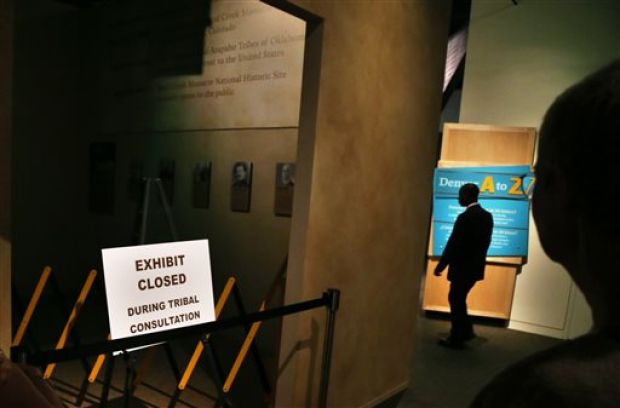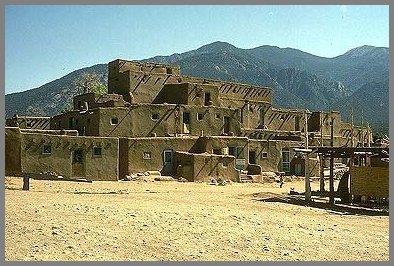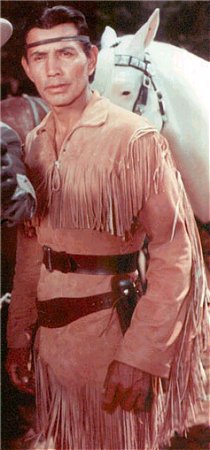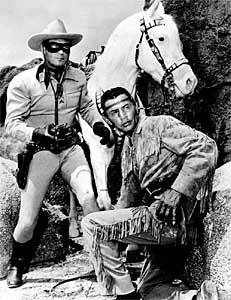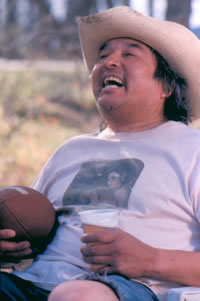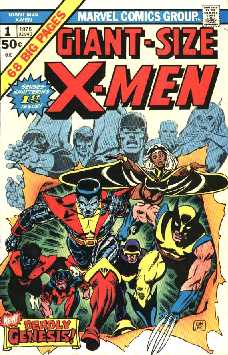My good buddy Ron Joseph
posted this to the Blue Corn Comics page on Facebook

This comes from Human Fly #19 (March 1979), the last issue of the series.
I bought the first few issues of Human Fly, but quit before Human Fly #18-19, which apparently was a two-parter featuring Indians.
You can see Indians and a pueblo in the cover of #18 below. The Hopi had homes like this once, but now I believe you can see them only at Taos Pueblo in New Mexico.

Another
page provides an idea of the story:
This time, the Fly and crew are at a Hopi Indian reservation, and the tribal elders are all drunks under the thumb of the local bar owner (hey! *i* didn't write this!).
The Elders are shaken out of their stupor when a member of the tribe uses a movie projector to display the Hopi Gods on the clouds during the Human Fly's stunt.See the first image.
Analysis
Sotuknang
is the name of the chief Hopi deity--akin to the "creator." But I think he's an abstract force, not a god in a human form. Spider Woman does appear in human form sometimes, but I think she's more of a holy being than a god. She might be akin to an angel in Christianity--i.e., someone who intervenes on behalf of the gods, but isn't a god herself.
Traditional Hopis did wear scarves around their heads, but not narrow headbands. I'm pretty sure they didn't wear hats with feathers. By 1979, their clothing was almost totally Western.
The plot sounds phony. The Hopis' reservation is in the middle of nowhere. I don't think they permit alcohol on the rez, and there are no local bars just outside the boundaries.
The Hopi "elders" live in three villages separated by 15 or 20 miles. This is in a tribe that must've had 5,000-plus members in 1979. The point is that one white man couldn't control or even reach all the elders. And if somehow he did, there would be thousands of other Hopis to contend with. Not to mention the tribal government, the tribal police, the Bureau of Indian Affairs, and so forth.
The "projected gods"
I don't know how the plot unfolds, but based on the clues, I can guess. Cha'tima is an earnest or angry young Indian who opposes the bar owner. She tries to rally the others, but no one will listen to her. In desperation, she projects images of the Hopi gods in the sky.
Seeing and perhaps hearing these "gods," the other Indians gain courage and resolve. They throw away the booze and confront the bar owner. With the Human Fly's help, they toss him in jail or kick him off the rez.
If this isn't the exact plot, it's the plot of many similar stories. Let's take a minute to see why it's flawed.
For starters, many Indians have converted to Christianity. Perhaps even a majority. On the Hopi rez, I believe Mormonism is predominant.
True, the traditional gods and beliefs coexist with the Christian God. But as I indicated before, there's no standard representation for Hopi deities. I don't think there's even a standard list of gods everyone agrees on. Different villages, clans, and societies have different beliefs.
Between Christianity and the lack of uniform beliefs, I doubt most Hopi would recognize the projected images. They'd say, "Who's that supposed to be?" Or, "Whoever that is, it's not Jesus."
But let's say everyone recognized the images. Perhaps the "gods" announced themselves with projected voices. Would that be enough to spur the Indians to act?
Well, if Jesus appeared in the clouds and ordered white Christians to confront a bar owner, would they? Some might, but many would recall recent movies such as
Star Wars and
Star Trek: The Motion Picture. They'd probably realize the stunt was a cinematic special effect, not a genuine apparition.
There's no reason for Indians to react differently. So let's hope they realized Cha'tima was manipulating them but rallied anyway. If they rallied because they believed the projections were real, that's bad. It would imply Indians are more gullible and superstitious than non-Indians.
Conclusion
Human Fly #18-19 seem like typical comic books from the 1960s and 1970s. The Indians are good--"noble savages" of a sort--while white men are the villains. The stories avoid Plains stereotypes and cliché, but the Indians are isolated, primitive, and easily manipulated. There's no hint that they're modern people who go to school and work, drive cars, watch TV, etc.
The writer's intent was as noble as the Indians he wrote about, I'm sure. He wanted to explain why they were downtrodden and lost--because of the white man's oppression. And to show them rebounding and taking charge--with the help of a white savior. It probably didn't occur to him that they were already doing okay: electing officials, signing agreements for water and coal, hiring lawyers, arguing with their Navajo neighbors, lobbying for help in Washington, etc.
People need to get over the idea that a reservation means a few dozen Indians huddled in a small village. Living as they did at the beginning of the 20th century with no technology except maybe trucks and guns. Having no contact with the outside world except when white men come to exploit or rescue them. That's simply wrong.
For more on
Native-themed comic books, see
Yakari the Noble Savage and
Scooby-Doo Meets Native "Shaman."









